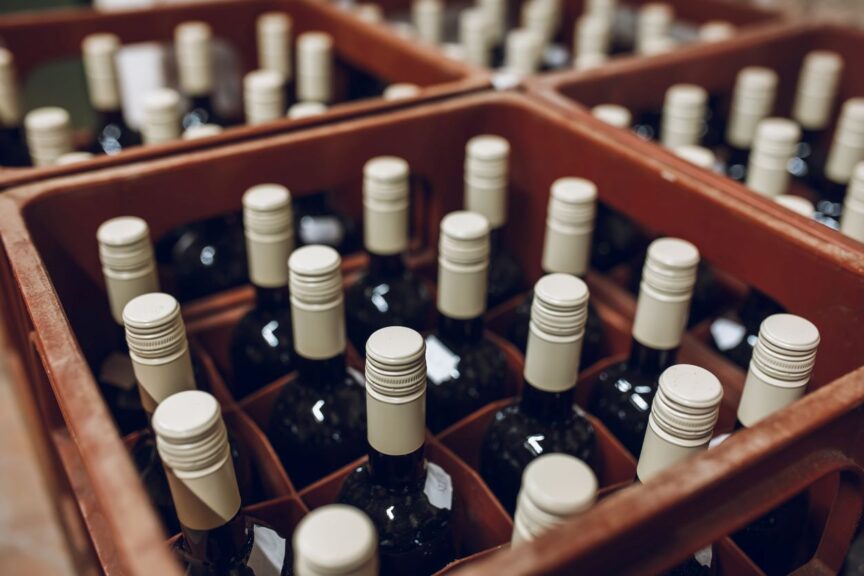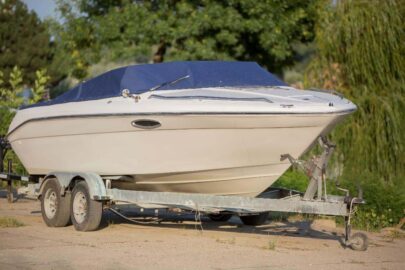Access Self Storage Blog
How To Safely Transport and Store Your Wine Collection
We know wine storage is more complex than it is to enjoy a glass at the end of a long week. Many questions come to mind: What is the ideal...
Wine Storage
We know wine storage is more complex than it is to enjoy a glass at the end of a long week. Many questions come to mind: What is the ideal storage temperature? How does sunlight affect a wine’s flavor? What causes wine to spoil?
Proper wine storage requires careful attention to these details, and in this guide, your friends at Arthur’s Self Storage of Branchburg will answer these essential questions so you can create a stable environment for your collection. From finding the best storage temperature to understanding how orientation impacts aging, you’ll learn everything needed to transport and store wine!
How Wine Storage Works
Wine storage may seem as simple as stashing bottles in a cool, dark spot, but some specific factors play a crucial role in preserving a wine’s flavor and quality. One often overlooked example is the cork.
Corks, typically made from natural oak, are porous and let a tiny amount of oxygen seep through. This minimal oxygen exposure is essential, as it allows the wine to mature gradually and develop complex flavors as the wine ages. Too much exposure can cause oxidation spoilage, but a good cork can maintain balance for a delicious flavor.
Decanters are another must-have tool for storing and serving well-aged wines. They are specially designed glass vessels that allow the wine to breathe. They bring out its aroma and flavor profile while filtering any debris that collects at the bottom of the bottle, which is a natural part of the aging process.
Temperature-Controlled Wine Storage: Red Versus White

Temperature is everything when it comes to wine storage. Reds, with their deeper flavors and body, fare well at slightly warmer conditions, which help maintain their complexity and depth. Whites, on the other hand, preserve their crispness and freshness best when stored at lower temperatures.
To dig deeper, let’s look at a few popular wine varieties and explore their ideal storage conditions.
Cabernet Sauvignon Storage
One of the world’s most popular red wines, cabernet sauvignon is bold, full-bodied, and often features dark fruit and earthy undertones. To preserve this complex profile, cabernet should be stored in a cool, dark place at around 55° F (13° C). Humidity levels around 50-70% keep the corks moist, preventing air from seeping in too quickly.
For any corked bottle, store it on its side so the cork stays in contact with the wine and avoids dryness and spoilage.
Chardonnay Storage
Chardonnay is a versatile family of white wines, ranging from light and crisp to rich and buttery, depending on the region and aging process. chardonnay should be kept slightly cooler than cabernet sauvignon and other reds, around 45° F to 50° F (7° C to 10° C). A wine fridge can help maintain this consistent range, especially for long-term wine storage.
Pinot Noir Storage
A lighter-bodied red wine, pinot noir brings delicate flavors of cherry, raspberry, and other earthy notes, and its sensitivity to environmental changes means it should be stored carefully at around 55° F (13° C) in a cool, dark space. Since pinot noir is prone to faster aging, even slight temperature shifts can impact its taste.
Merlot Storage
Merlot is a red wine with a smooth, medium-bodied profile with flavors like plum, cherry, and even chocolate. Similar to cabernet, merlot thrives in storage at around 55° F (13° C). Like other reds, merlot should be stored on its side if corked to prevent oxidation and keep it ready for enjoyment over time.
How To Transport Wine When Moving
Now that we’ve explored the basics of wine storage, let’s focus on keeping your collection secure while transporting it. All the factors that protect your wine in stationary storage—temperature, light, and stability—become even more critical during a move.
When moving wine, take extra care to avoid sudden jostling or impact. Each bottle should be wrapped in padding, such as a dish towel or Bubble Wrap, and placed in a sturdy box to absorb any bumps along the way. Sunlight is terrible for aging wines, as ultraviolet rays can break down flavors over time. Keep your wine in a shaded area throughout the transportation process.

Remember red and white wines have different storage needs, with white wines stored upright, and red wines being kept on their side. Upright storage of white wine reduces the risk of leaks and preserves their stability. Lying on their side helps red wines maintain cork moisture and prevent oxidation.
Finally, remember wine is sensitive to temperature changes. Moving often involves shifts between air-conditioned and warm spaces, which can impact the wine’s flavor and aging. Keep your car or moving truck air-conditioned and running whenever transporting wine to help preserve your collection’s quality.
Rent Climate-Controlled Wine Storage With Arthur’s Self Storage of Branchburg
A consistent climate is the most critical factor in wine storage. Without it, your wine risks spoiling rather than aging, which could ruin years of cultivating your collection.
When you need peace of mind for your bottles of merlot or chardonnay, turn to Access Self Storage. We offer convenient, reliable wine storage solutions at Arthur’s Self Storage of Branchburg. These specialized spaces help maintain the stable environment your wine needs throughout the year, no matter how hot or cold it gets outside.
If you’re moving to a new home and need a secure space for your wine as you unpack, wonder how to store wine glasses securely, or if you’re looking for a short-term home for your collection, our wine storage spaces are up to the task.
Explore our flexible and affordable storage options with our online size guide, and once you’ve found the right space for your wine, contact Arthur’s Self Storage to rent or reserve your unit today!
Other Articles for You

Navigating the Challenges of Rising Economic Costs
Groceries are more expensive than they used to be. Home prices are significantly higher than they were a few years ago. Automotive prices are up, insurance rates are up, and…
Read
How to Store Your Boat During the Offseason
As fall sets in on Woodbridge, NJ, it's time to say goodbye to those hot, sunny days on the water. Many residents in our area put away their boats in mid-September, but not everyone has a personal dock or adequate boat storage at home. It's important to winterize your boat if you want to avoid unnecessary weather-related damage. Access Self Storage is here to help, with a few tips on the dos and don'ts of storing your boat this fall.
Read
Have Fun and Stay Safe with Socially Distanced Holiday Hosting
This year has been like no other, but that doesn't mean you can't make the holidays as festive as ever. Social distancing presents a whole new set of challenges when it comes to hosting a holiday party. Whether you're planning a workplace celebration or family dinner in Kenilworth, NJ, you’ll need to consider some different options to help you manage the holidays.
Read
Self Storage Could Help Your College Student Come Back For the Summer
Once college lets out in North Brunswick, NJ at Rutgers or other schools, it's time for students to head home for summer break. Instead of having your kids bring back everything with them, keeping their belongings in storage units during the break makes the most sense. After all, they'll have to bring everything back to school once classes resume. Access Self Storage has three things to keep in mind for your college students this summer.
Read